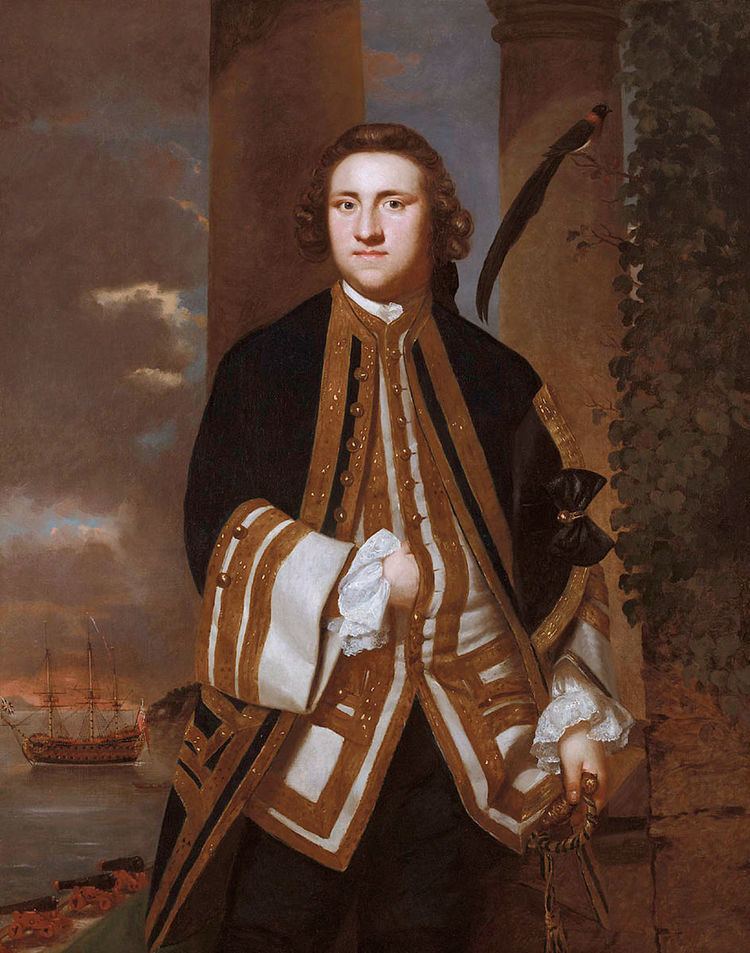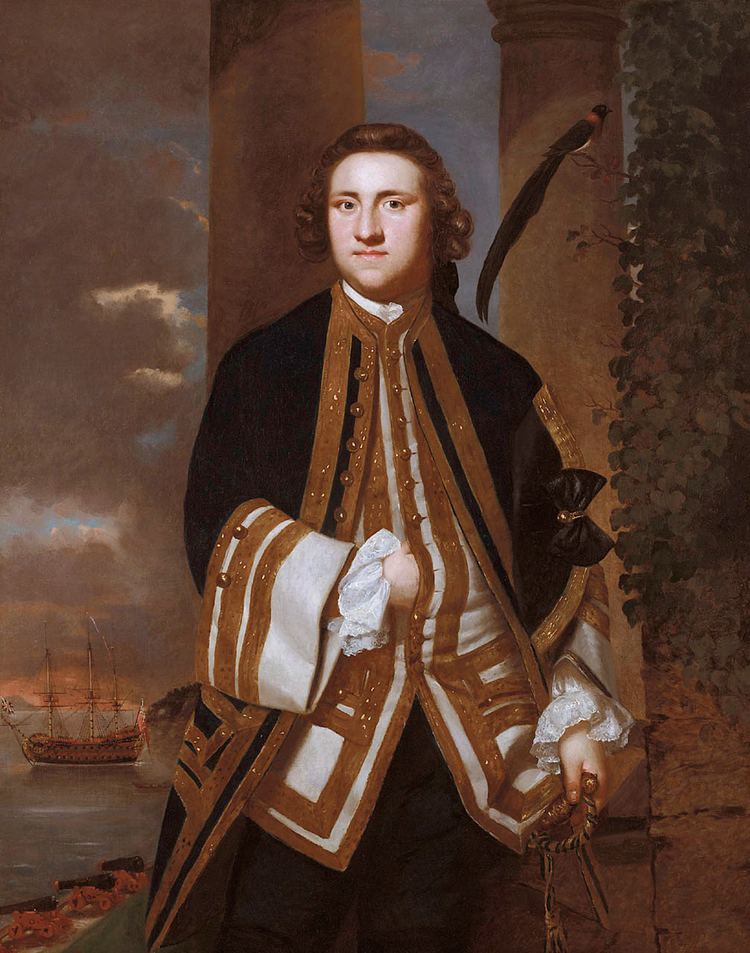Rank Admiral Died February 4, 1795 | Name George 1st | |
 | ||
Parents Richard Edgcumbe, 1st Baron Edgcumbe Siblings Richard Edgcumbe, 2nd Baron Edgcumbe People also search for | ||
Battles and wars Seven Years' War | ||
George Edgcumbe, 1st Earl of Mount Edgcumbe, PC (3 March 1720 – 4 February 1795) was a British peer, naval officer and politician.

Life
Edgcumbe was the second surviving son of Richard Edgcumbe, 1st Baron Edgcumbe and his wife Matilda, the only child of Sir Henry Furnese. He is thought to have been educated at Eton.
He was commissioned a lieutenant in the Royal Navy in 1739 and in 1742 was promoted to be commander of the bomb vessel HMS Terrible. In the course of 1743 he was appointed acting captain of the 20-gun HMS Kennington, and was officially confirmed on 19 August 1744. He commanded her in the Mediterranean until 1745, when he was advanced to the 50-gun HMS Salisbury. This ship, as part of the Western Fleet under Edward Hawke and Edward Boscawen, initially patrolled the Bay of Biscay during the War of the Austrian Succession. Her ship's surgeon was James Lind, who conducted his experiments on scurvy during such a patrol in 1747. The war ended in 1748. About this time Edgcumbe was painted by Sir Joshua Reynolds and the Salisbury appears in the background.
In 1746, Edgcumbe was returned as Member of Parliament for Fowey at a by-election, on his father's interest. He was considered a government Whig, but rarely attended Parliament as he was at sea. In 1747, he was appointed Clerk of the Council of the Duchy of Lancaster, an office he retained until 1762.
In 1751, he went to the Mediterranean as senior officer in HMS Monmouth, and the following year in the 50-gun HMS Deptford. He was still in her and with his small squadron at Menorca, when the French invaded the island on 19 April 1756. He hastily landed the marines and as many of the seamen as could be spared, and sailed the next day for Gibraltar, before the French had taken any measures to block the harbour. At Gibraltar he was joined by Admiral John Byng, by whom he was ordered to move into the 66-gun HMS Lancaster. In the Battle of Minorca, on 20 May the Lancaster was one of the ships in the van, under Rear-Admiral Temple West, which did get into action, and being unsupported suffered severely. In 1758, still in the Lancaster, he was in the fleet under Edward Boscawen at the reduction of Louisbourg. On his return to England, with the despatches announcing this success, he was appointed to the 74-gun HMS Hero, in which he took part in the blockade of Brest during the long summer of 1759, and in the crowning Battle of Quiberon Bay on 20 November 1759.
He continued in the Hero, attached to the grand fleet under Hawke or Boscawen, until the death of his brother Richard on 10 May 1761, when he inherited his brother's barony, and succeeded him as Lord Lieutenant of Cornwall in June. He was promoted to rear-admiral on 21 October 1762.
He was appointed Treasurer of the Household in 1765, serving until 1766, and made a Privy Councillor on 26 July. He became Commander-in-Chief, Plymouth the same year, retaining the command until 1771. In 1770, he was promoted vice-admiral and was appointed joint Vice-Treasurer of Ireland. He remained Vice-Treasurer until 1772, when he was appointed Captain of the Gentlemen Pensioners. Promoted to admiral in 1778, he was created Viscount Mount Edgcumbe and Valletort in 1781, and remained Captain of the Honourable Band of Gentlemen Pensioners until resigning in 1782, when he was appointed Vice-Admiral of Cornwall. In 1784, he was again appointed joint Vice-Treasurer of Ireland, holding office until 1793. In 1784, he was also elected a fellow of the Royal Society In 1789, he was granted the further title of Earl of Mount Edgcumbe, and died on 4 February 1795.
On 16 August 1761, he had married Emma Gilbert (the only daughter of John Gilbert, Archbishop of York) and they had one child, Richard who succeeded to his titles. In English folklore, Emma has been identified as the subject of the story of the "Lady with the Ring". Lady Emma's Cottage on the Mount Edgcumbe estate is named after her.
A manuscript journal, kept by Edgcumbe and Captain William Marsh, from 30 April 1742 to 1 June 1744, is in the Bodleian Library. A letter from Edgcumbe to Garrick is printed in the latter's ‘Private Correspondence’.
